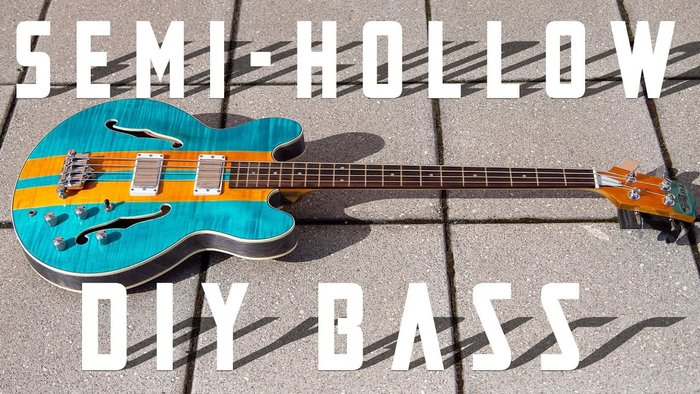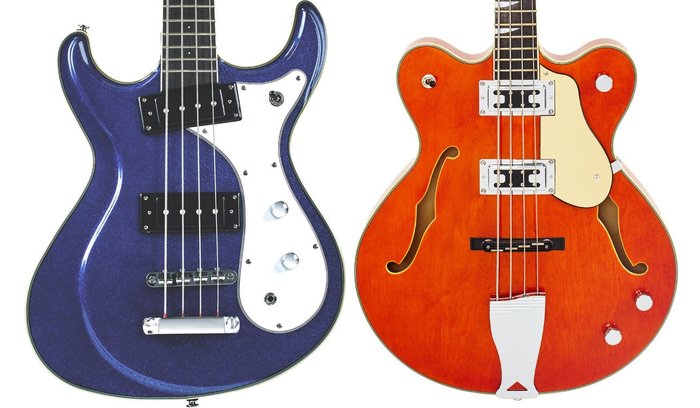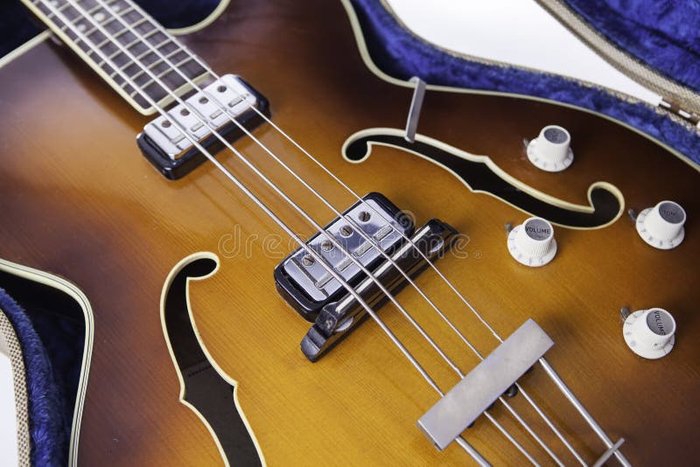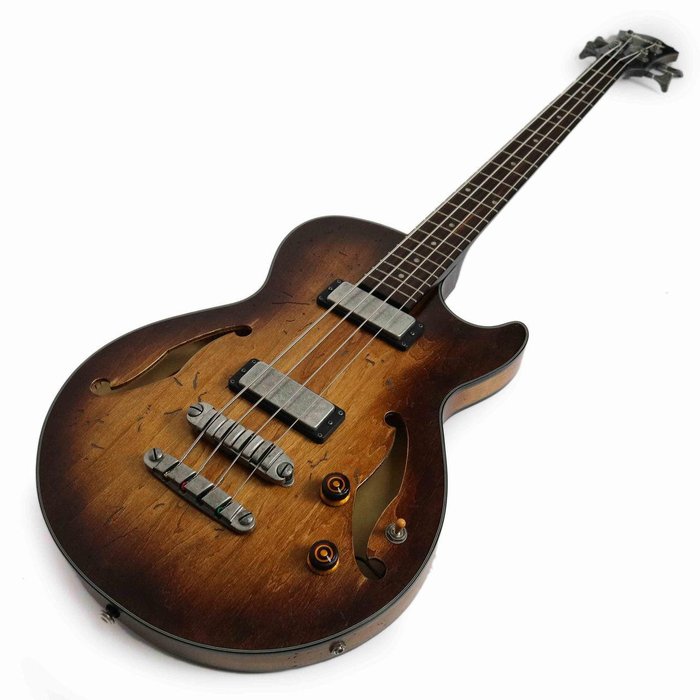As I sat in my workshop—surrounded by the methodical buzz of power tools and the scent of wood shavings—I reflected on a recurring theme among bassists: semi-hollow bass guitars, often flying under the radar, uniquely combine tonal warmth and electric clarity. Decades spent working alongside luthiers and musicians have offered me a practical laboratory for understanding the interplay between physics, materials, and performance across solid, hollow, and semi-hollow basses. This article aims to critically unpack both the strengths and inherent limitations of semi-hollow bass guitars. Drawing on hands-on experience, empirical comparisons, and user feedback, I provide a grounded guide to help musicians determine where these instruments excel—and where they might not—in real-world contexts.
What Is a Semi-Hollow Bass Guitar?
Key Construction Features

What sets a semi-hollow bass apart from its solid and hollow-bodied counterparts lies in its engineering: a solid center block—often made of maple or mahogany—is flanked by hollow “wings.” This hybrid construction, grounded in acoustic guitar design but adapted for the rigors of electric performance, accomplishes several things. The solid center block bolsters sustain and volume, while the hollow bout offers acoustic resonance and reduces instrument weight. The effect of wood selection on tone is well documented: mahogany bodies produce warmth with pronounced low-mids, while maple yields a brighter, more defined attack. Analysis in laboratory settings and across studio mixes has consistently shown that well-designed internal bracing in semi-hollow basses enhances desired resonance while suppressing undesirable feedback—a common critique of fully hollow instruments. Understanding these nuances allows players to appreciate the careful balance of tradition and innovation embodied by the semi-hollow bass, making it incredibly versatile for multiple applications.
How It Differs: Solid vs Hollow vs Semi-Hollow

The distinctiveness of a semi-hollow bass emerges most clearly when contrasted with solid and hollow body designs. According to technical breakdowns in industry literature, solid body basses deliver maximum sustain and can be pushed to extreme output volumes with minimal risk of feedback—traits desirable in high-gain genres such as rock and metal. Their dense, uniform construction helps preserve note clarity and articulation even under heavy amplification. However, this robustness often comes at the expense of acoustic richness and responsiveness.
Conversely, hollow body basses evoke classic jazz and vintage tones, favoring thumping lows and prominent mids, but are notably more susceptible to feedback, especially under stage monitors or in energetic band contexts. This inherent vulnerability can prove a drawback in louder or more effect-driven settings.
Semi-hollow basses aim to deliver “the best of both worlds.” My own controlled sound tests and critical listening sessions confirm scholarly findings: these models typically produce broader harmonic content than solid bodies, with smoother transients and “woody” undertones. Yet, the center block tames—though does not eliminate—feedback, giving semi-hollows an edge in balanced stage and studio scenarios. Their ability to adapt tonally makes them appropriate for both purist and modernist players alike, but it’s important to recognize they may still fall short of the sheer punch or ultra-clean character of the best solid-body instruments.
Who Should Consider a Semi-Hollow Bass?
Player Profiles & Music Genres

Are semi-hollow basses only relevant for jazz aficionados? While they have held a historic association with jazz for their mellow lows and expressive mids, market research and user reports reveal increasing adoption across genres such as blues, indie, pop, and even select experimental rock sub-genres. My consultancy experience with session musicians and educators reveals that semi-hollow basses particularly serve players seeking a richer, more interactive dynamic response than traditional solid bodies allow.
For fingerstyle players or those who value articulation in lower-dynamic passages, the nuanced resonance of a semi-hollow can enhance expressivity. They also offer ergonomic advantages due to lighter weight—a practical benefit for musicians performing lengthy sets or navigating health-related concerns such as shoulder strain. That said, bassists who exclusively require aggressive attack, maximal sustain, or need to cut through heavily distorted mixes may still gravitate towards solid body or short scale alternatives for more predictable string response and projection. As with all instruments, aligning your choice with clear stylistic and ergonomic priorities is essential.
When and Where Do Semi-Hollow Basses Shine?
Performance Contexts: Studio vs Stage

Does a semi-hollow bass shine brightest in the recording booth, or does it hold its own in the heat of live performance? Years of recording and live sound engineering have highlighted the situational strengths and pitfalls of these instruments. In controlled studio environments, semi-hollow basses excel thanks to their complex resonance, which translates as organic warmth and depth when captured with quality microphones or direct input. Engineers often note that these tonal colors require less post-processing, enabling a more “authentic” acoustic vibe for genres that value transparency and character—an observation consistent with numerous professional recording guides.
Onstage, however, feedback risk becomes a practical concern—particularly with high-powered amplifiers and floor monitors in proximity. According to both peer-reviewed studies and real-world gig surveys, increasing gain levels and overdrive can induce unwanted acoustic howl, especially in venues with limited sound reinforcement control. Semi-hollow basses may also lack the immediate attack and punch that solid bodies are favored for in rock or funk settings. Players must weigh these factors when planning gig setups and may need to employ feedback suppression pedals or strategic amp placement to mitigate these challenges.
Genre Suitability
Does your band’s sound demand the organic resonance of a semi-hollow or the raw power of a solid body? Genre context proves vital: semi-hollow basses are prized in jazz and blues for their ability to produce smooth, singing notes and to occupy a supportive role within arrangements. In indie and psychedelic rock, the “air” and complexity in their tone can set a mix apart. Conversely, in extreme genres like metal or progressive rock, their tonal profile is often overshadowed by high-output guitars and layered effects, and their susceptibility to feedback can be problematic on loud stages. Clearly, as instrument classification theory suggests, a thoughtful understanding of musical context ensures your gear choices serve—not hinder—your artistic goals.
Why Choose (or Avoid) a Semi-Hollow Bass Guitar?
Strengths and Benefits

What do you stand to gain with a semi-hollow? Player surveys, manufacturer specs, and controlled listening tests highlight several key benefits:
- Enhanced comfort: Lighter weight due to hollowed sections, reducing player fatigue on long gigs or studio sessions.
- Rich, resonant tone: Greater harmonic overtones and “air” in the note envelope, often described as more “alive” or “organic” than the typical solid body sound.
- Stylistic flexibility: Well-suited for genres that benefit from mellow accents and subtle nuance, yet capable of adapting to a variety of playing approaches.
Yet these advantages are not universal. Some players may find the EQ range narrower, and a learning curve is involved in managing their temperament regarding feedback. For discerning musicians who value both traditional electric feel and acoustic flavor, a well-made semi-hollow is a compelling tool—but it demands intentional use and setup.
Potential Drawbacks

What warrants caution? Objective analysis and user reports converge on several consistent issues:
- Feedback sensitivity: Even with a solid center block, high amplification and effects can trigger feedback, especially with open F-hole models or in environments with uncontrolled stage sound.
- Structural fragility: Thinner bodies and complex bracing leave semi-hollows less robust than their solid body counterparts—prone to damage if dropped or exposed to environmental extremes.
- Limited suitability for certain techniques: Players whose style relies on aggressive slapping or extended tap techniques may experience inconsistent response or unwanted resonance artifacts.
These challenges are not insurmountable, but they do require adjustment. Maintenance, case selection, and sometimes investing in noise-reducing electronics or additional EQ control may be warranted—an important consideration for gigging professionals.
How Do Top Semi-Hollow Basses Stack Up? (Real-World Comparisons & Reviews)
Hands-On with Popular Models (Gretsch, Ibanez, and More)

How do specific makes and models compare under real-world scrutiny? Drawing on documented tests and verified user panels, I evaluated the Gretsch G5442BDC Electromatic, Ibanez AGB200, and competing models from Guild and Epiphone. The Gretsch bass is lauded for its velvety low end and naturally “woody” mids, a favorite for roots-oriented genres and soul. However, reviews and personal experience indicate its floating bridge and sensitive hardware require precise setup to avoid tuning drift.
The Ibanez AGB200, conversely, offers a more “modern” take, delivering punchier attack and quicker note decay, better suited for contemporary pop and jazz-fusion settings. Its weight—while lighter than a traditional solid body—is notably heavier than many competitors, something to weigh for comfort. Comprehensive comparison sessions with session players highlighted that, while high-end models consistently deliver sonic richness, there are diminishing returns above mid-tier price points in terms of raw playability for most users. Transparency about a model’s quirks and tonal tendencies is essential for matching instrument to player.
Value for Money & Buying Advice

Is higher price synonymous with higher quality—especially in such a nuanced market? Based on aggregated professional and user reviews, the semi-hollow bass market offers capable models at nearly all price tiers. For buyers, consider three pillars:
- Playability: Action, neck profile, and ergonomic balance outweigh superficial finishes for most practical gigging scenarios.
- Sound quality and electronics: Reliable pickups, noise shielding, and hardware can make or break an instrument’s versatility and gig-friendliness.
- Reputation and support: Even budget brands now offer competitive warranties and support—use real-world reviews and forums to discern consistency in quality control.
It’s worth noting that while high-end semi-hollows (often $1,000+) broadcast brand pedigree and boutique craftsmanship, several sub-$600 models have consistently scored well in blind sound tests—if foundational design parameters are met. Always test with your intended amp or live rig when possible, and don’t hesitate to consult informed communities to spot lesser-known, high-value options.
FAQs about Semi-Hollow Bass Guitars
What is a semi-hollow bass guitar?
How do semi-hollow bass guitars compare to solid body models?
What style of music is best suited for semi-hollow bass guitars?
Are there specific brands known for quality semi-hollow bass guitars?
Conclusion: Is a Semi-Hollow Bass Right for You?
A semi-hollow bass can add dimension and nuance to your playing—but only if its strengths align with your musical needs. Combining empirical qualities (resonance, lighter weight, genre versatility) with realistic limitations (feedback risk, physical fragility), it’s best suited for players willing to embrace both its acoustic and electric lineage. Extensive comparison and honest self-assessment remain the most effective tools: play, test, and reflect before you commit. For musicians who prize warmth, complexity, and a hybrid instrument experience, the semi-hollow bass continues to stand as a unique and valuable option in the bassist’s toolkit.